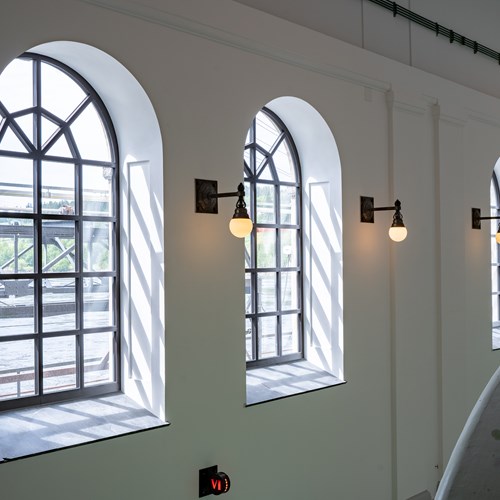
To view the content, please enable marketing cookies by clicking on the button below.
Cookie settings

Most of the buildings we will use in the future have already been built – so we need to make the most of them.
Like all other industries, the building industry is now keenly aware of climate change and what we must do to reduce greenhouse gas emissions. New buildings therefore must meet a range of requirements in areas such as material selection, energy efficiency and low-emission energy sources.
This is naturally good and totally necessary. But there is still good reason to pause and think about how much new buildings actually contribute to the big picture. The fact is that 80 – 90% of the buildings we will use in the future have already been built. The most effective way to reduce greenhouse gas emissions from buildings is therefore to improve existing buildings, as they offer much larger gains than new buildings.
A life-cycle analysis by research organization SINTEF (Norway) has shown that renovation projects have roughly 50 % lower emissions than the best-performing new builds. This reduction in emissions is mainly due to re-using high-emission materials, such as soil, foundations and supporting structures of steel and concrete.
We need to renovate faster
To ensure the successful renovation of existing buildings it is of course important that this work goes ahead. Progress on this front has been very slow so far. In 2020, the EU estimated that only 1 % of European buildings were being renovated to improve energy efficiency each year. If we continue at this pace it could take up to 500 years to bring all buildings up to adequate efficiency standards.
The EU Renovation Wave strategy has therefore set the goal to double the number of buildings that are renovated over the next ten years. This should, among other things, ensure that:
Choose the most environmentally friendly products
Although the re-use of high-emission materials makes up a significant part of the climate benefits of renovation, it is also important to consider other environmental aspects. One example is to choose building materials with low environmental impact. This is an area that is attracting growing attention and is reflected in both public regulations and industry standards and certification schemes such as BREEAM. Among other things, it is important to choose materials that:
One such material is aluminium, which is extracted from common, naturally occurring materials. A full eight percent of the Earth’s crust is made up of aluminium, so there is an abundant supply of raw materials. More importantly, aluminium is very durable. The fact that 70 % of the aluminium that has ever been produced is still in use clearly backs that up. Aluminium also requires minimal maintenance. This means lower operating costs and less environmental impact, as there is less need for maintenance products.
Finally, it is worth noting that aluminium can be re-melted and re-used without loss of properties or quality. In other word it is a circular product and does not really have an end of life. This is very important at a time when increasing emphasis is being placed on creating a circular economy and recycling materials, in renovation and in new builds.
We take this seriously at Sapa and use recycled CIRCAL aluminium from post-consumer scrap to produce new products. This means that CIRCAL aluminium has the world’s lowest carbon footprint among all forms of aluminium today.
Complete freedom of choice
Another advantage of aluminium is the freedom of choice and flexibility it allows. This material offers many possibilities, so it is often the material of choice for architects. Aluminium can be formed using many fabrication methods, so windows and facade profiles can be fabricated in precisely the desired shape. Aluminium also has a good strength to weight ratio – it weighs little but can support high loads.
This makes it possible to install large areas of glass without the need for additional structural support. These properties also mean that aluminium facades. windows and doors can be made with very narrow profiles to achieve a clean look while maximizing views and daylight.
Feel free to contact us at Sapa to learn more about the possibilities
Picture 1: S-huset, Halmstad Högskola, SE (Preconal)
Picture 2/3: Rånåfoss kraftstasjon, NO (NorDan)